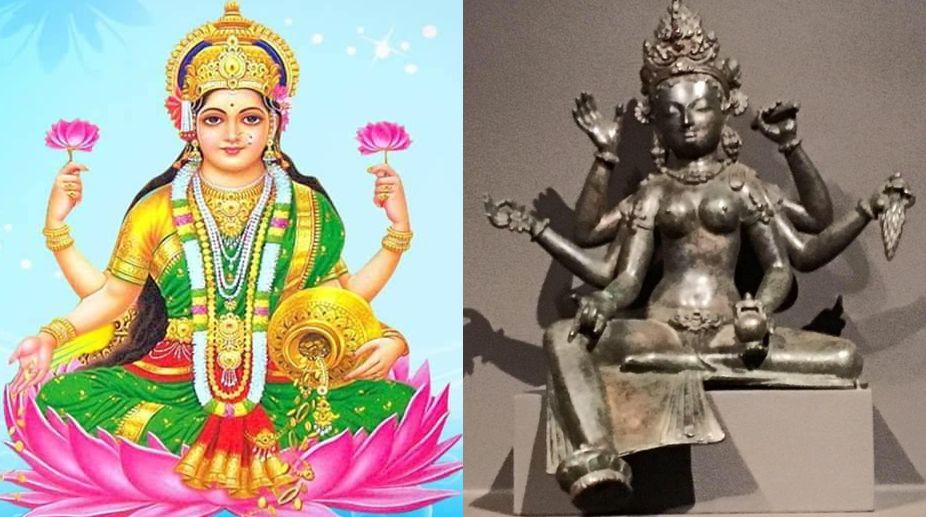Kartik Purnima Snan 2019- A sacred bath in River Ganges
Take a holy dip in Ganga and light diyas on its bank on this pious day to yield spiritual benefit which is a thousand times more than taking a bath in the river on a normal day.

Hindu Goddess Lakshmi (L) and Buddhist Goddess Vasudhara (R)
Since Hinduism and Buddhism are correlated, we have seen similarities in the deities they worship – even though there have been certain nuances, exquisite parities between their theories, Gods and Goddesses have always been noticeable.
The parallelism of the Hindu Goddess Lakshmi and the Buddhist Goddess Vasudhara can be considered as a pretty good example of such similarities between the two religions. In the oldest surviving cave-temples of Buddhism, in Nepal and Tibet especially, Lakshmi has been found to be existent there, as a Goddess of wealth, abundance and fortune, in the form of Vasudhara – the Goddess who is considered as the Buddhist version of Lakshmi with minor disparities between them. Lakshmi, the Hindu Goddess having an owl as her vehicle, is known to be the wife and strength of Lord Vishnu.
Whenever Lord Vishnu has descended on Earth as the avatars of Ram and Krishna, Lakshmi too has descended as his respective consort. However, in the Atharvaveda, which was composed around 1000 BC, Lakshmi evolved into a complex concept with plural manifestations. Book seven; chapter 115 describes the plurality, saying that hundred Lakshmis were born in the form of mortals. Some were good, while some bad.
Advertisement
Welcoming only the good Lakshmis and eliminating the bad ones, Hinduism denotes, again in Book 12; chapter 5, that Lakshmi (or better to say Punya Lakshmi) is only to be worshipped. In Satapatha Brahmana, Lakshmi is identified with Shree in a form where She emerges as the daughter of Prajapati after his longterm, intense meditation on creation of life on universe. Born as the daughter of Prajapati, She was a beautiful, gleaming and trembling being, at the time of her birth, with immense energy and powers bubbling in her.
According to another theory, Lakshmi emerged during the Samudramanthana (churning of the ocean), as the daughter of SeaGod, with a lotus in her hand. On the other hand, Garuda Purana, Linga Purana and Padma Purana says that Lakshmi was born as the daughter of the divine sage Bhrigu and his wife Khyati. No matter how She was born or who her parents were, She is ultimately worshipped as the highest form of wealth, fortune and fertility, in Hinduism.
Vasudhara, the Goddess-wife of Jambhala, has her paramount popularity as the Goddess of wealth, in Buddhism. In Nepal and Tibet, Vasudhara is a widely-worshipped deity; though in Tibet, her worship is confined among lay people and until a monastic patron requests the other members of the institution to worship her, She is generally regarded as the ‘benefactor of laity’.
She is worshipped in some places as a deity with two arms and one head while in some other places as a deity with four arms and three eyes and in other places as a deity with six arms and four heads.
However, Lakshmi and Vasudhara are often compared on the basis of their iconographical look-alikes. Both the deities hold lotus in their hands, also sit or stand on a lotus pedestal. They both are regarded as the Goddesses of wealth, fortune and prosperity. Lakshmi and Vasudhara are alter-egos united by their identical selves. Coordinator, Class XII, Belda Gangadhar Academy
Advertisement